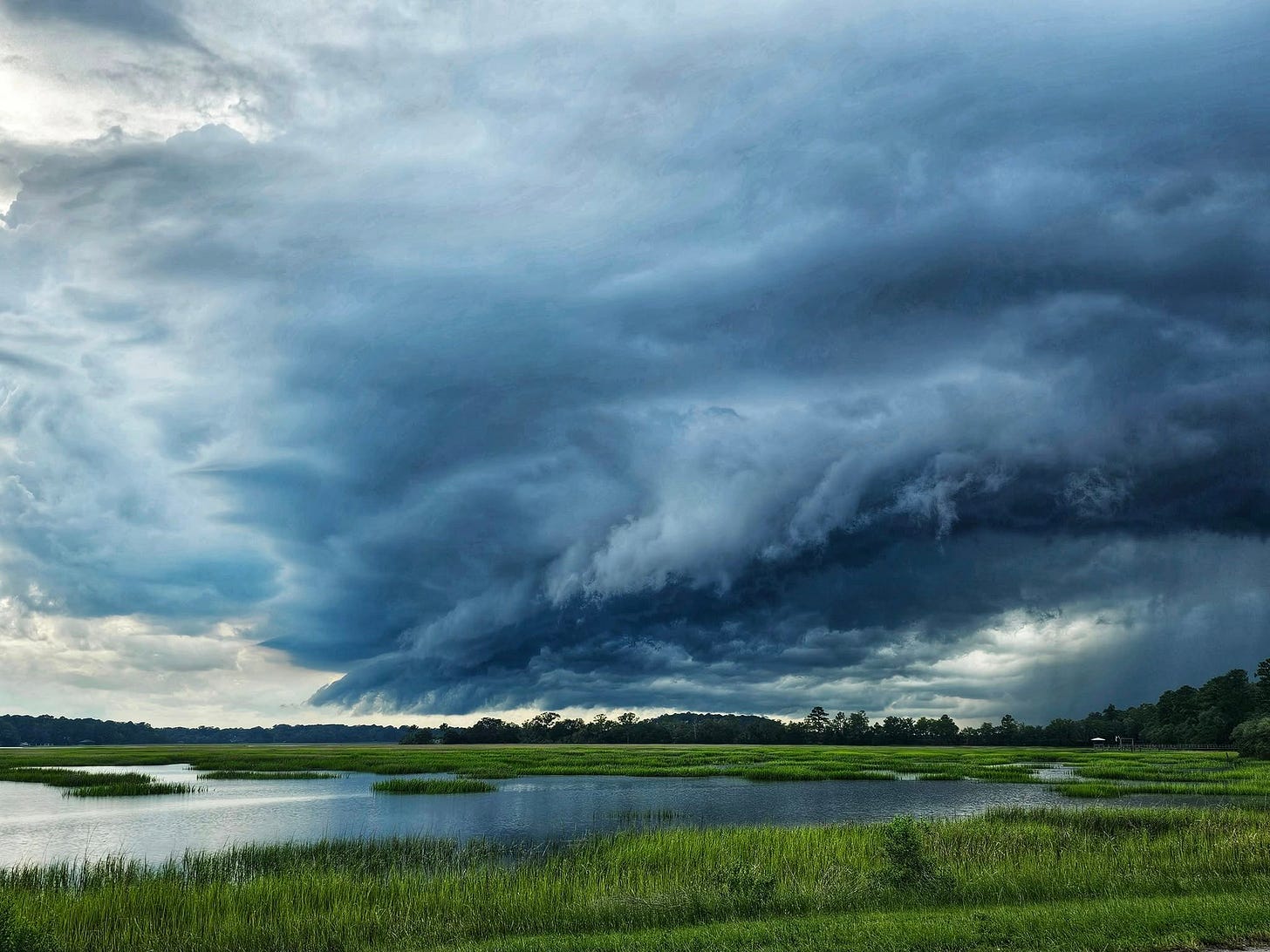How Whiskey Helped Save the Lowcountry
What the garden club knew.
It wasn’t the preservationists who saved the Lowcountry—not at first. It was the bootleggers.
Long before the tour buses rolled down Bay Street, before the garden club ladies tied ribbons on wrought iron gates and pronounced a property “historic,” the old homes of Beaufort were being held together by far humbler means: barrels of whiskey, jars of shine, and the quiet grit of people who refused to watch their family places crumble into ruin.
If you ask around—ask, with a glass of sweet tea and no judgment in your voice—someone will tell you the truth. Maybe it’ll be an old-timer rocking on a porch swing, or a cousin who talks a little too loud after two glasses of bourbon. They’ll lower their voice, lean in close, and say, “Well… I reckon whiskey saved more houses than the banks ever did.”
The Creekside Commerce
After the Civil War, when the rice fields dried up at the end of slavery, and Sea Island cotton was no longer king thanks to the arrival of the boll weevil around 1918, the Lowcountry economy went to seed. The grand plantation homes that once symbolized Southern wealth and pride sat empty, weather-beaten, and haunted. Many owners couldn’t pay the taxes, much less afford a new roof. Some walked away. Others stayed—and got creative.
The Lowcountry became an ideal place to move goods quietly thanks to the winding rivers and hidden creeks that snake through the marshlands. And during Prohibition and the Depression, those goods were often liquid. Clear. Potent. Homemade in copper stills hidden in the palmetto scrub. With Charleston to the north and Savannah just down the coast, Beaufort found itself in the perfect spot for a little backwoods commerce.
Not everyone was in on it, of course. But many knew. And even those who didn’t take part directly usually had a neighbor or cousin who did—and turned a blind eye when a new porch column went up or a fresh coat of whitewash appeared overnight. It wasn’t the preservationists who saved the Lowcountry—not at first. It was the bootleggers.
The House That Brandy Built
Take Marshfield, for instance. That graceful home on the bluff with a widow’s walk and heart of pine floors. It wasn’t saved by grants or tax credits. It was saved by a string of whiskey barrels floated up Battery Creek under the cover of fog. The man who lived there—quiet, polite, old Beaufort stock—ran a tidy still behind a stand of wax myrtle. His wife hosted tea parties while he charted tide tables by candlelight.
Their grandchildren now lead historic tours through the parlor, pointing out the original plaster and smiling sweetly when someone asks how the family held onto it all these years.
A Society of Secrets
And it wasn’t just the men. The women ran the front rooms—the checkbooks, the customer lists, the cover stories. The garden clubs and sewing circles sometimes served a second purpose. If someone asked too many questions, the response was always the same: “We’re just preserving Southern heritage.”
And they were.
The Ladies of the Garden Club held fundraisers at homes bought with bootleg money. They restored cemeteries with funds raised at “silent auctions” where the whiskey flowed faster than the Artillery punch. They arranged flowers in the very foyers that moonshine once rebuilt.
And they knew.
They knew that the historical society wanted tales of colonels and cotton—but the real story was leaner, foggier, more human. Thanks to that illicit income, properties were saved from bulldozers. Shutters were rehung, chimneys rebuilt, and rose gardens replanted. The money may not have come from cotton, shipping, or banking, but it came nonetheless, and it flowed straight into the bones of the Lowcountry’s past.
By the time the preservationists arrived—in earnest, with clipboards and grant applications—the houses were still standing. Some worn, some weathered, but alive. And those bootleggers, quietly retired, sat on their porches with satisfaction. No statues, no plaques. But they knew.
They’d done what was necessary to save something sacred.
Today, tourists marvel at Beaufort’s antebellum beauty. They photograph the ironwork, run their hands along tabby walls, and sip juleps in homes once almost lost. They may not know the full story. They may never learn who paid for that hand-carved staircase or how the wide-plank floors were restored.
The Families Who Knew When to Keep Quiet
Some families talked, and some families didn’t. And in Beaufort, the ones who didn’t still had their porches intact.
Everyone knew someone who “restored a property” in the 1930s or ‘40s with no visible means of income. A widow whose paint never peeled. A third son who somehow bought back the family land. No questions were asked. Just a knowing glance, maybe a nod at church.
But if you listen closely, you can still hear the truth in the creak of the wood, the whisper of the tides.
Whiskey saved the Lowcountry.
And nobody talks about it—but nobody forgets it, either.



"They photograph the ironwork, run their hands along tabby walls, and sip juleps in homes once almost lost." — Beautifully written. And yes, whiskey did save the Lowcountry!